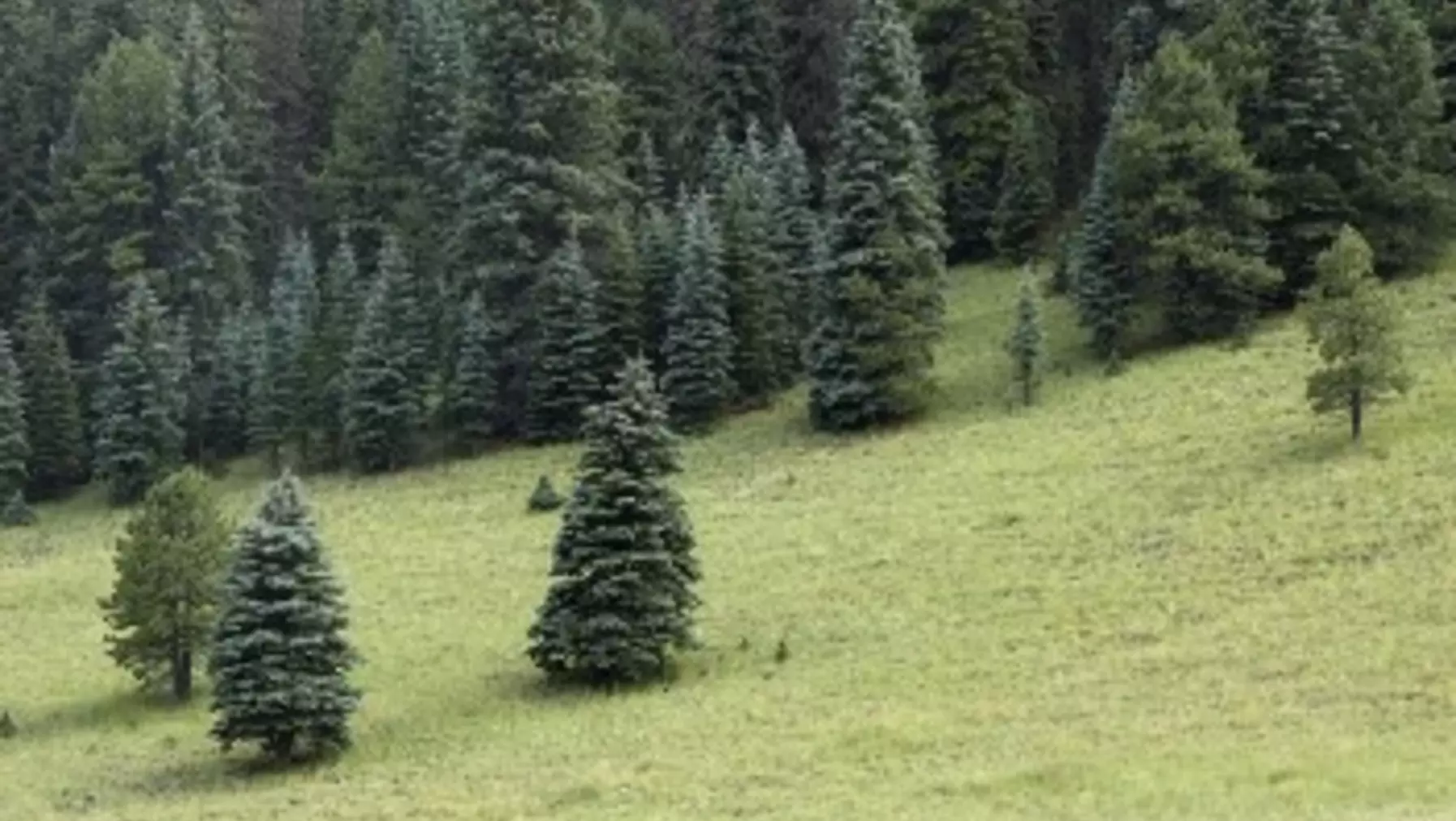Climate
Montane climate is quite variable, depending on latitude and altitude. Climates are always cooler with increased elevation and usually wetter than lowland environments of the same region; there is increased cloud cover, especially up to the 1000-2000 meter range. With still higher elevation, the climate is still cooler but usually drier than at middle elevations. Climate may be extremely severe at very high elevations, with permanent snow and ice and very little life, just as at the highest latitudes.
Soils
Mountain soils are very variable, depending on the parent rock, which is often exposed at higher elevations. Temperate montane soils are often podzols, as in the taiga; tropical montane soils are often latosols, as in the tropical rain forest. Alpine soils at all elevations may have similarities to those under arctic tundra.
Vegetation
There are always changes in vegetation (often in discrete zones) with elevation change up mountains. In some cases these zones may be similar (even with the same plant and animal species) to comparable zones at lower elevation and higher latitude. Thus the tundra zone is highest in elevation (alpine) just as it is farthest from the equator (arctic), and some arctic plants occur on mountaintops well to the south of the Arctic. With ascent up higher mountains, the upper limits of forests, trees, and plant life are reached one after another with successively higher elevations.
Diversity
Diversity generally decreases with elevation just as it does with latitude. The altitudinal replacement of plant and animal species with a change in elevation promotes moderate diversity in most mountainous areas. Flora and fauna in north-temperate montane regions are usually derived from the lowland biota farther north, whereas in tropical mountains they are usually derived from the adjacent tropical lowlands. Thus there are interesting convergences between unrelated tropical and temperate alpine species. The high relief of the topography limits some lowland environments while furnishing other types unique to mountains. Important plant groups include tree ferns and Campanulaceae in the tropics, Saxifragaceae in temperate zone, and conifers and Ericaceae in both. Important animal groups include sheep and goats, well adapted for precipitous terrain, and birds of prey, with good flying conditions and abundant small-mammal prey.
Plant Adaptations
Montane plant adaptations are very much related to the overall vegetation type, whether subtropical wet forest, arid desert, alpine tundra, montane coniferous forest, or others. Some slopes are sufficiently steep to lack soil and thus support only rock-living plants, with their adaptations. Lichens gain a foothold on bare rock by their fungal body dissolving the rock surface, and they can persist because their algae produce nutrients by photosynthesis. Gigantism (from polyploidy, perhaps influenced by the high intensity of UV rays at high altitude) is frequent in herbaceous plants. Conversely, individuals of many species with a great altitudinal range (dandelion, for example) are smaller at high elevations, a straightforward adaptation to harsher conditions. There is much convergence in tropical alpine plants of different hemispheres, with silvery (to reflect intense sunlight), hairy (to avoid desiccation), sword-like leaves in rosettes and tall spikelike inflorescences to attract animal pollinators from long distances.
Animal Adapations
Adaptations to deal with extreme temperature variation are emphasized, just as at high latitudes. In addition, there is a premium on adaptations to the rugged physiography of many mountainous areas, in particular for locomotion (e.g., spongy centers of hooves to adhere to rocks, sharp claws for climbing, broad wings to soar on updrafts created as winds blow up hillsides) and for living within rock piles. Flightlessness has often evolved in insects of high tropical mountains, probably for the same reason as on islands, to combat unintended dispersal from these "island" environments.
Human Effects
Plant associations of mountainous areas have generally been disturbed less than those of their lowland equivalents because of the relative difficulty of human access to the higher elevations. Nevertheless, tropical cloud forests and temperate conifer forests are extensively logged, often on surprisingly steep slopes, with modern technology. Slash-and-burn agriculture in the tropics and agrobusiness in the temperate zone have made inroads on mountain slopes, again even steep ones, where soil is sufficient.

